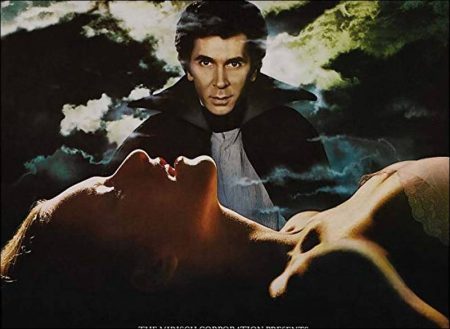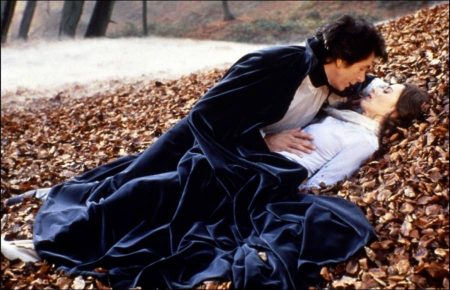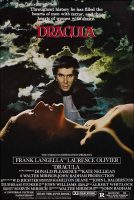Taglines: The story of the greatest lover who ever lived, died, and lived again.
Dracula movie storyline. When a ship is wrecked off Whitby, the only survivor, Count Dracula, is discovered lying on the beach by the sickly young Mina Van Helsing, who is visiting her dear friend Lucy Seward. Lucy, her fiancé Jonathan Harker (a solicitor), and her father Dr. Jack Seward (who runs the local asylum) try to make the Count feel welcome to England.
The Count quickly takes the life of Mina, and proceeds to romance Lucy, with the intention of making her his greatest bride. Soon after the death of Mina, the Sewards call her father Dr. Abraham Van Helsing to come to their home. As Lucy falls deeper under the spell of the Count, Dr. Van Helsing almost immediately comes to understand that his daughter fell prey to a vampire and discovers the culprit to be none other than the Count himself. Dr. Van Helsing, Dr. Seward, and Harker work together to foil the Count’s plans to take Lucy away to his native Transylvania.
Dracula is a 1979 British-American dark romantic horror film directed by John Badham. The film starred Frank Langella in the title role as well as Laurence Olivier, Donald Pleasence and Kate Nelligan. The film was based on Bram Stoker’s 1897 novel Dracula and its 1924 stage adaptation, though much of Stoker’s original plot was revised to make the film—which was advertised with the tagline “A Love Story”—more romantic. The film won the 1979 Saturn Award for Best Horror Film.
About the Production
Like Universal’s earlier 1931 version starring Bela Lugosi, the screenplay for this adaptation of Bram Stoker’s novel Dracula is based on the stage adaptation by Hamilton Deane and John L. Balderston, which ran on Broadway and also starred Langella in a Tony Award-nominated performance. Set in the Edwardian period, and strikingly designed by Edward Gorey, the play ran for over 900 performances between October 1977 and January 1980. It is also known for switching names of characters of Mina Harker and Lucy Westenra. When Badham was asked, why he switched their names in his film, he said that he couldn’t quite remember and that maybe he and Richter felt like Mina was a dopey name and that Lucy was kind of a nice name, so they rearranged it.
The film was shot on location in England: at Shepperton Studios and Black Park, Buckinghamshire. Cornwall doubled for the majority of the exterior Whitby scenes; Tintagel (for Seward’s Asylum), and St Michael’s Mount (for Carfax Abbey). The Castle Dracula was a glass matte painted by Albert Whitlock. Gilbert Taylor was the cinematographer, while the original music score was contributed by John Williams.
According to Frank Langella, Count Dracula was “a dominant, aggressive force. He must have Miss Lucy or he dies. He wants what he wants and he doesn’t analyze it. Dracula as a character is very erotic… A woman can be totally passive with Dracula: ‘he made me drink, I couldn’t help it.’ Dracula seems to represent a kind of doorway to sexual abandonment not possible with a mere mortal. Besides, he’s offering immortality. Actually, I can’t think of a woman who wouldn’t like to be taken if it’s with love. If you take a woman by force and at the same time gently, you can’t fail.”
Langella wanted to explore sides of the character which weren’t shown before: “I decided he was a highly vulnerable and erotic man, not cool and detached and with no sense of humour or humanity. I didn’t want him to appear stilted, stentorian or authoritarian as he’s often presented. I wanted to show a man who, while evil, was lonely and could fall in love”.
Langella holds this view many years after the release of the movie. In his 2017 interview during SITGES film festival he said that he “saw a gentleman in [Dracula], while the bad guys were the ones who wanted to destroy him, and we see that today in many instances: ignorance leads to the desire to destroy different people, there is the suffering of homosexuals, or women.” Langella remembers that the beginning of shooting was very disorganized. The cinematographer was changed and they had continual changes of plans. However, actor mentioned that the process “turned out well” in the end.
However, the most vivid memories were Langella’s efforts to create a different Dracula. “I did not want to look like Bela Lugosi, or Christopher Lee”, remembers Langella. He thus read the novel and found the character to be “gothic, elegant, lonely, without anyone who understood his problem, which consisted of the need for blood to survive.” Langella also understood that the attraction that the character produced among women was key to realize his enormous “power of seduction”, which Langella did not hesitate to use.
Dracula (1979)
Directed by: John Badham
Starring: Frank Langella, Laurence Olivier, Donald Pleasence, Kate Nelligan, Janine Duvitski, Jan Francis, Teddy Turner, Kristine Howarth, Joe Belcher, Ted Carroll, Gabor Vernon
Screenplay by: W. D. Richter
Production Design by: Peter Murton
Cinematography by: Gilbert Taylor
Film Editing by: John Bloom
Costume Design by: Julie Harris
Art Direction by: Brian Ackland-Snow
Music by: John Williams
MPAA Rating: None.
Distributed by: Universal Pictures
Release Date: July 13, 1979
Visits: 221


